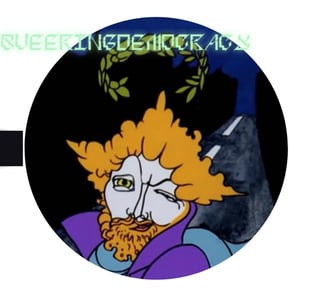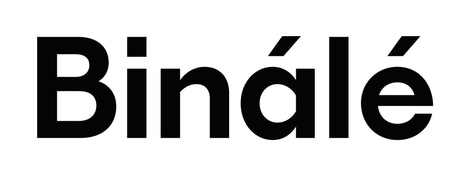KOVÁSZNAI GYÖRGY
HUN
Kovásznai György (1934-1983) 1934. május 15-én született Budapesten. 1944-ben nevelőapját katonai szolgálatra hívták be Ausztriába, ahová a családja is elkísérte. A Budapesttől távol töltött idő alatt a család elvesztette otthonát és minden személyes holmiját. 1944 végén Budapestre visszatérve a családnak újra kellett kezdenie az életét, és ettől kezdve szegénységben éltek. Kovásznai a Budapesti Képzőművészeti Főiskolára járt, de tanulmányait 1954-ben, 20 évesen abbahagyta. Ezután másfél évig bányászként dolgozott, hogy első kézből szerezzen tapasztalatokat a munkásosztályról. A művész azonban hamarosan teljesen kiábrándult, mivel úgy találta, hogy „az emberek utálják a küzdelmet, a nagy szlogeneket és a politikát. Csak addig figyelnek ezekre, amíg szenvednek tőlük…”.
1956-ban újra felvételt nyert a Budapesti Képzőművészeti Főiskolára, de a következő évben eltanácsolták, még mielőtt megkapta volna a diplomáját. 1958-tól 1974-ig a Nagyvilag című jelentős magyar művészeti és irodalmi folyóirat szerkesztőjeként és rovatvezetőjeként dolgozott, kritikáinak és festményeinek egy részét itt publikálta. A folyóiratnál töltött ideje alatt írókkal és irodalomkritikusokkal ismerkedett meg. Nagyjából ugyanebben az időben, az 1950-es évek végén Kovásznai elkezdett félig illegális művészeti összejöveteleket tartani egy barátja házában. Az 1960-as évek végéig itt hetente többször összejött egy 50-200 fős avantgárd művészközösség. Évtizedekkel később kiderült, hogy legjobb barátja, aki házigazdája volt ezeknek a találkozóknak, az évek során információkat adott át Kovásznairól a titkosrendőrségnek.
1961-ben Kovásznai a Pannónia Filmstúdióban, Magyarország fő animációs filmstúdiójában kezdett dolgozni, eleinte drámaíróként, de hamarosan saját filmeket készített. 1983-ban bekövetkezett haláláig a stúdióban dolgozott. Pályafutása során 25 rövidfilmet, egy mini tévésorozatot és egy zenés-animációs játékfilmet készített. Animációit azonban csak rövid ideig vagy egyáltalán nem mutatták be a mozikban. Kovásznainak életében nem volt lehetősége arra, hogy festményeit és rajzait kiállítsák.
Kovásznai politikailag a marxizmushoz kötődött, mégis folyamatos konfliktusban állt az uralkodó rendszerrel. Életművének jelentős része 1968 tavaszára és nyarára, a párizsi és prágai eseményekre reflektál. A prágai tavaszról, amely a szovjet invázióban csúcsosodott ki, „A hetvennégyes nyár emléke” című rövidfilmjében fejezte ki véleményét. Ebben a filmben egy csótányszerű lény és egy fekete, ablaktalan vonat alkot éles kontrasztot a nyári örömök világával, amely popzenével és csinos lányokkal van tele.
ENG
Gyorgy Kovasznai (1934-1983) was born on 15 May 1934 in Budapest, Hungary. In 1944 Kovasznai’s foster father was called upon for military service in Austria with his family. During their time away from Budapest the family lost their home, and all of their personal belongings. Returning to Budapest at the end of 1944, the family had to start life all over again, and lived in poverty from that time onwards. Kovasznai attended the Budapest College of the Fine Arts, but gave up his studies in 1954, at the age of 20. He then worked as a miner for a year and a half, in an effort to get some first-hand experience with the working class. However, the artist soon became completely disillusioned, as he found that “people hate struggle, great slogans and politics. They pay attention to them only as long as they suffer from them…”
In 1956 Kovasznai was readmitted to the Budapest College of the Fine Arts, but was dismissed the following year before receiving his degree. From 1958 to 1974 he worked as the editor and columnist of Nagyvilag, a significant Hungarian arts and literary journal, in which he published some of his criticism and paintings. He came to know writers and literature critics during his time at the journal. Around the same time, in the late 1950’s, Kovasznai started holding semi-illegal artistic gatherings at a friend’s house. An avant-garde artist community of 50-200 people came together several times a week, until the end of the 1960’s. It emerged decades later that his best friend, who hosted these sessions, had been passing on information about Kovasznai to the counterintelligence agency throughout the years.
In 1961 Kovasznai started to work at Pannonia Film Studio, Hungary’s main animation film studio, initially as a playwright, but soon moving on to make his own films. He continued to work at the studio until his death in 1983. Over the course of his career at the studio he made 25 short films, a mini TV-series and a musical-animation feature film. However, his animations were only shown for brief periods of time in cinemas, or not at all. Kovasznai never had an opportunity to exhibit his paintings and drawings in his lifetime.
Politically, Kovasznai was attached to Marxism, yet had an ongoing conflict with the ruling regime. A significant part of his oeuvre reflects on the spring and summer of 1968, and the events in Paris and Prague. His take on the Prague Spring, which culminated in the Soviet invasion, was expressed in his short film “Memory of the summer of ’74”. In this movie a cockroach-like creature and a black, windowless train form a sharp contrast with a world of summer joy, full of pop music and pretty girls. Kovasznai was diagnosed with a serious form of leukaemia in 1980, but refused to be treated and ran away from the hospital, so that he could create his final monumental series of paintings and write his great summarizing essay on art theory. He died in 1983.
Discussing Kovasznai’s impact today Hungarian sociologist, Ferenc Hammer wrote: “Do you remember Peter Parker’s first fight in Spider-Man? When he is attacked by a bullying schoolmate, the viewers are made to see through Parker’s eyes that the opponents are moving in different time dimensions. For Parker, the fierce attack appears as a slow-motion shot. This is why those involved in the scene perceive Parker to be moving at a paranormal speed. Before the dazzled eyes of posterity, Kovasznai appears -for lack of a better definition- as a Gesamtkunst artist, whose works of total art keep evading the force of systematizing interpretation. While spellbound audiences keep gaping at the painted figures that abandon their frames, marvelling at the artist who side-steps genre delimitations in a flash, let us conjure the aquarium of silence that surrounds Parker, with the noises of the outside world deadened into a hollow mumble.”
KÖRÚTI ESTÉK
1972
9:45
animációs film
A Nemzeti Filmintézet közreműködésével a BINÁLÉ-n
HUN
A Körúti esték Kovásznai György által 1972-ben készített animációs film. A nyüzsgő Körút tele emberekkel, autókkal és épületekkel. A világos, merész színek és a laza ecsetvonások használata élénk, energikus hangulatot kölcsönöz az alkotásnak.
“Budapest!
Itt éltem én! Lelkek közt! Csupa lélek!
Csupa teszt!
Kávéház! Mámor! Lángokban leszálló csuda-est!”
Kosztolányi Dezső
“Ami Kovásznai munkáiban nagyon ismerősnek tűnt, az a lendület, a lényegesség és a készítés vészhelyzete. Hogy vészhelyzetnek éreztem… Volt egyfajta kollegiális alkotási düh, amit tőle kaptam.”
William Kentridge Kovásznai munkásságáról
ENG
“Körúti esték” is an animation short movie by Hungarian artist György Kovásznai, created in 1972. The title translates to “Evenings on the Boulevard,” depicting the vibrant nightlife and atmosphere of the city during that period. The stop-motion animation shows a bustling city street in Budapest, filled with people, cars, and buildings. Using bright, bold colors and loose brushstrokes provides a lively, energetic feel.
“Budapest!
This is where I lived! Among souls! Full of souls!
Full of bodies!
A café! Intoxication! A night of flames!”
Dezső Kosztolányi
“What felt very familiar in Kovasznai’s work was the impetus, the essentialness and the emergency of making. That it felt like an emergency… There was kind of a collegial fury of creation that I got from him.”
William Kentridge on the work of Kovásznai


